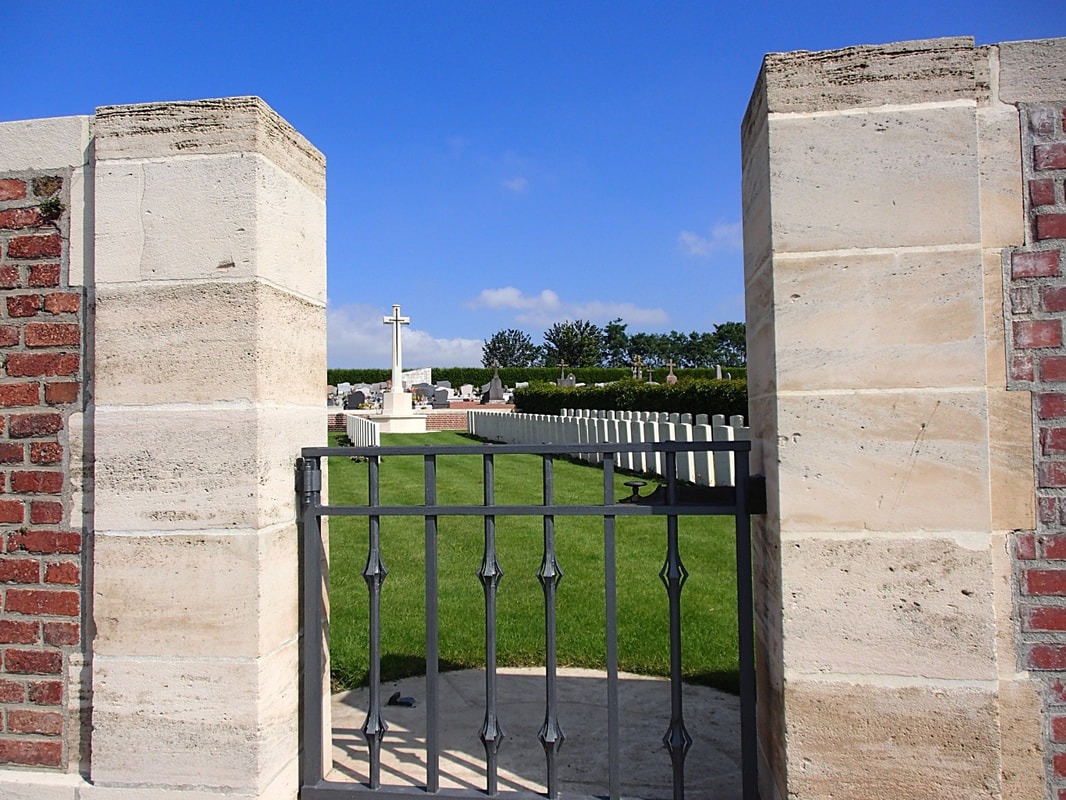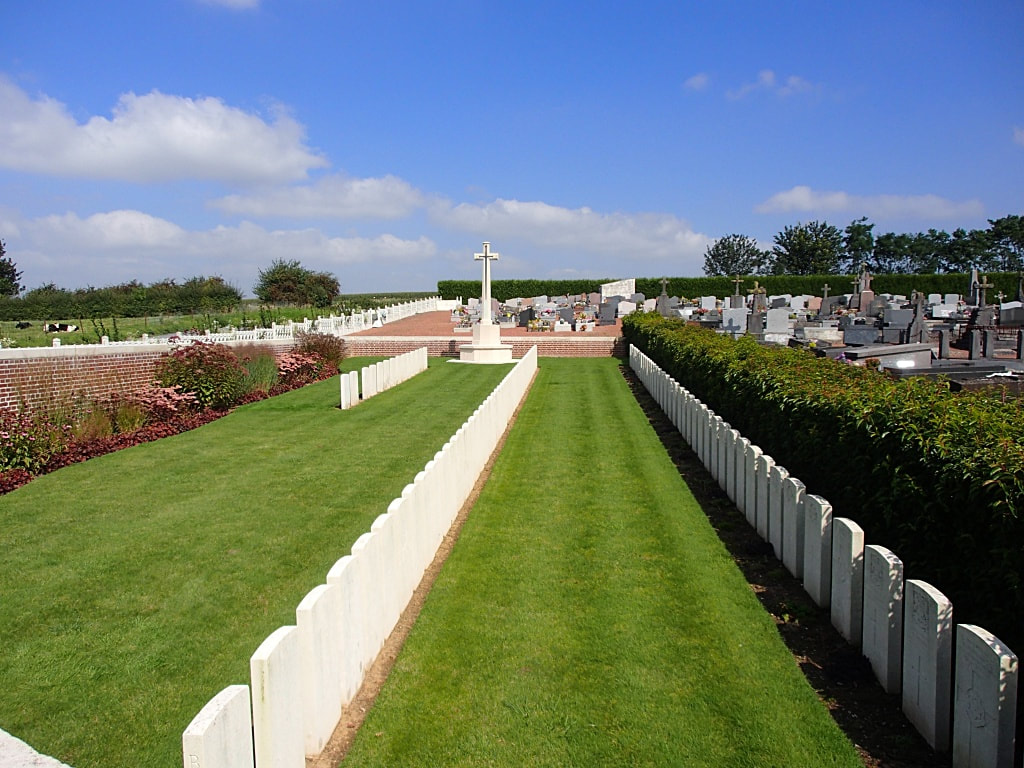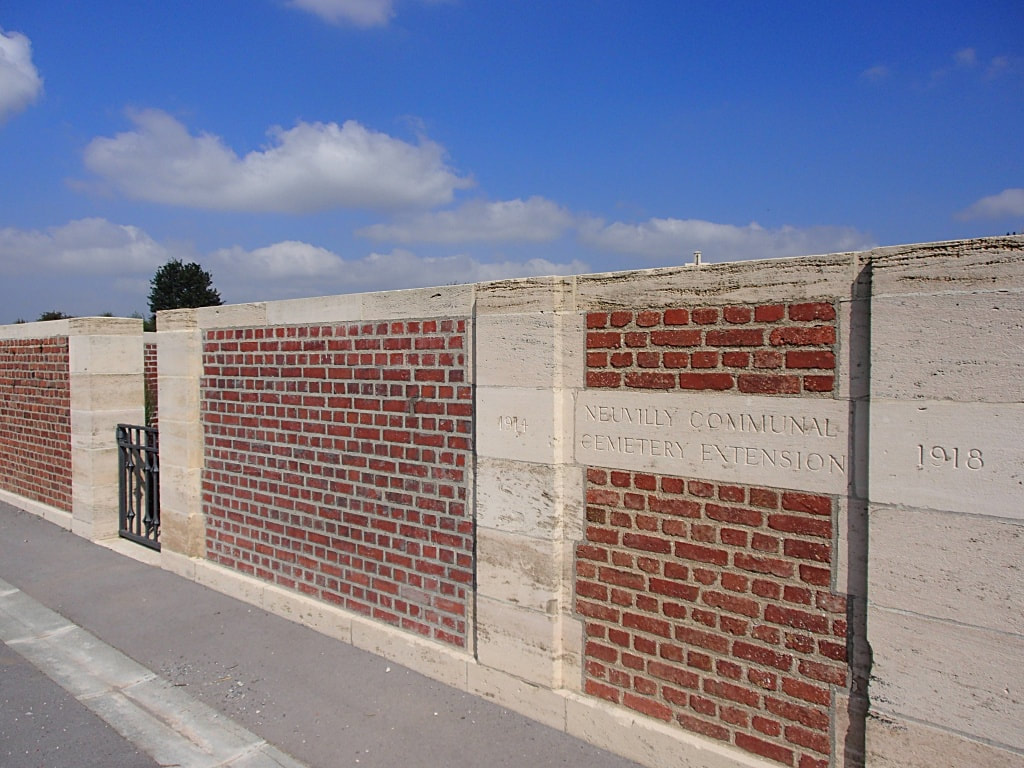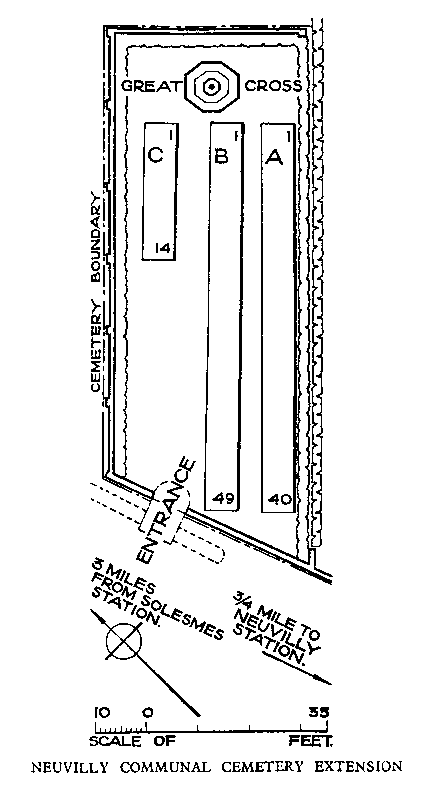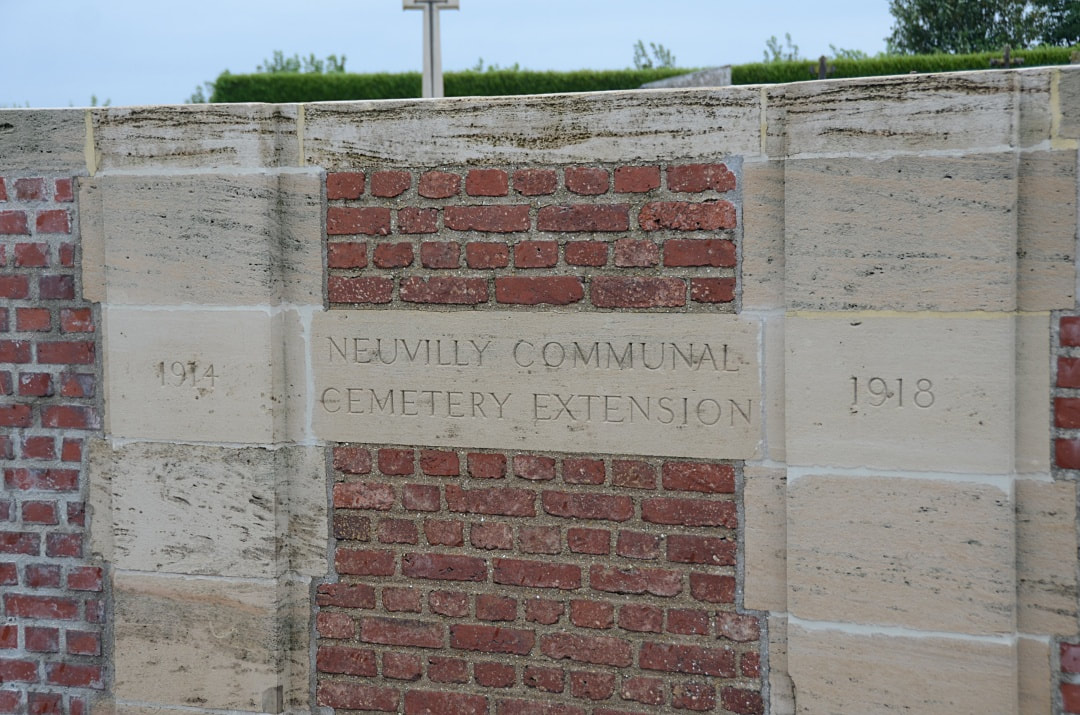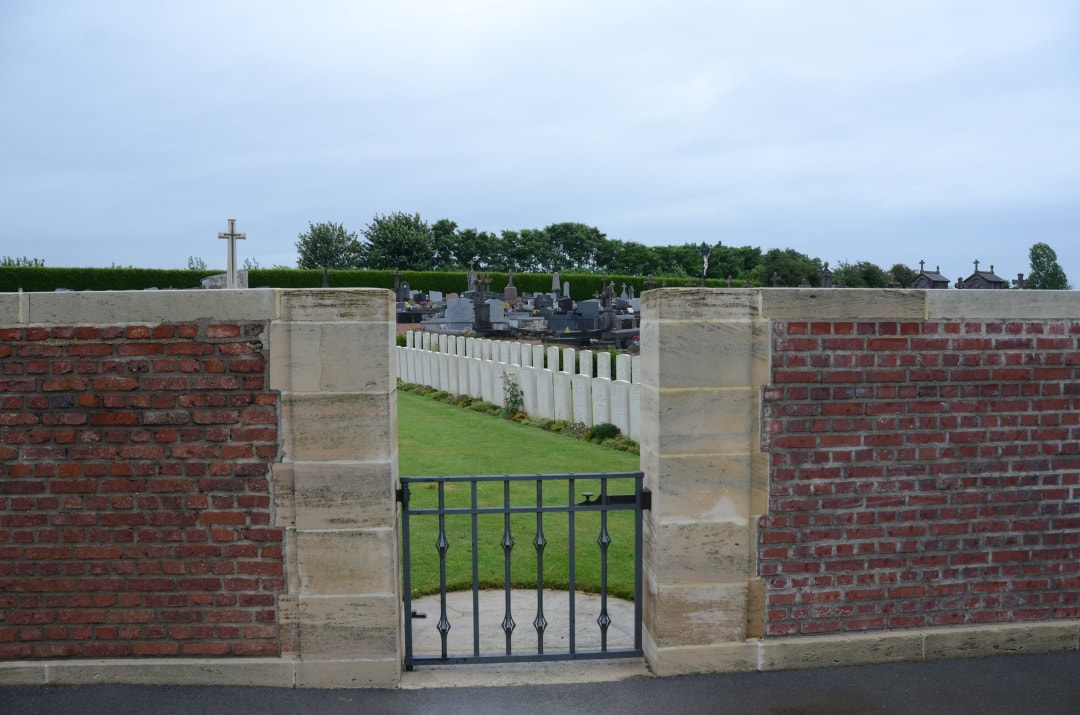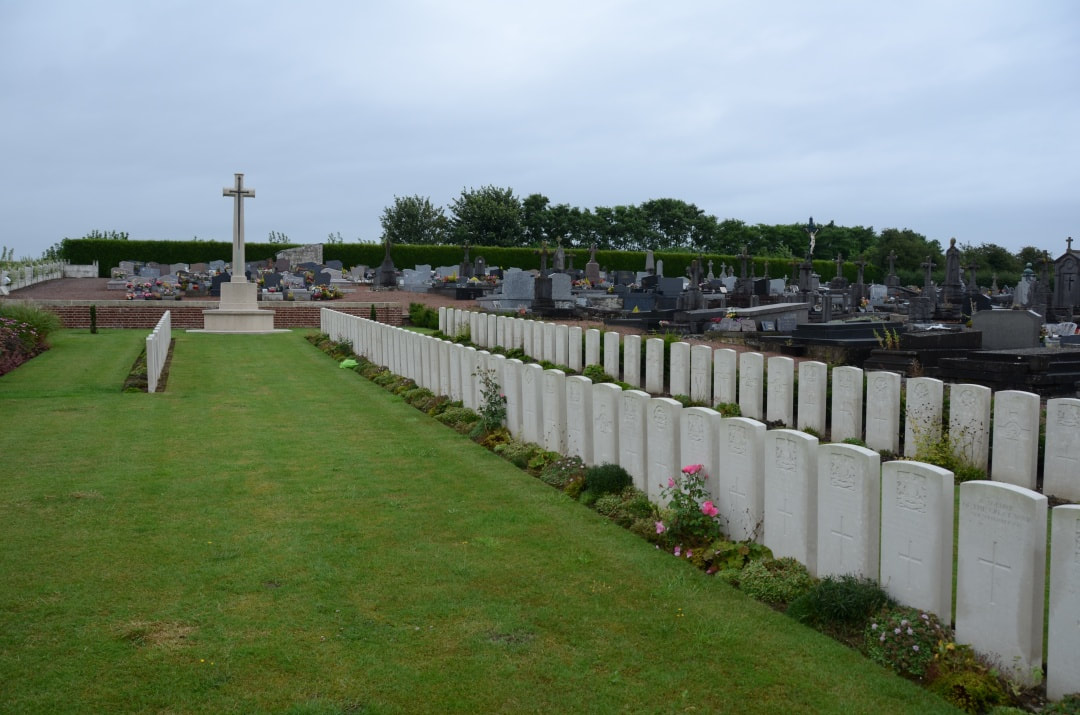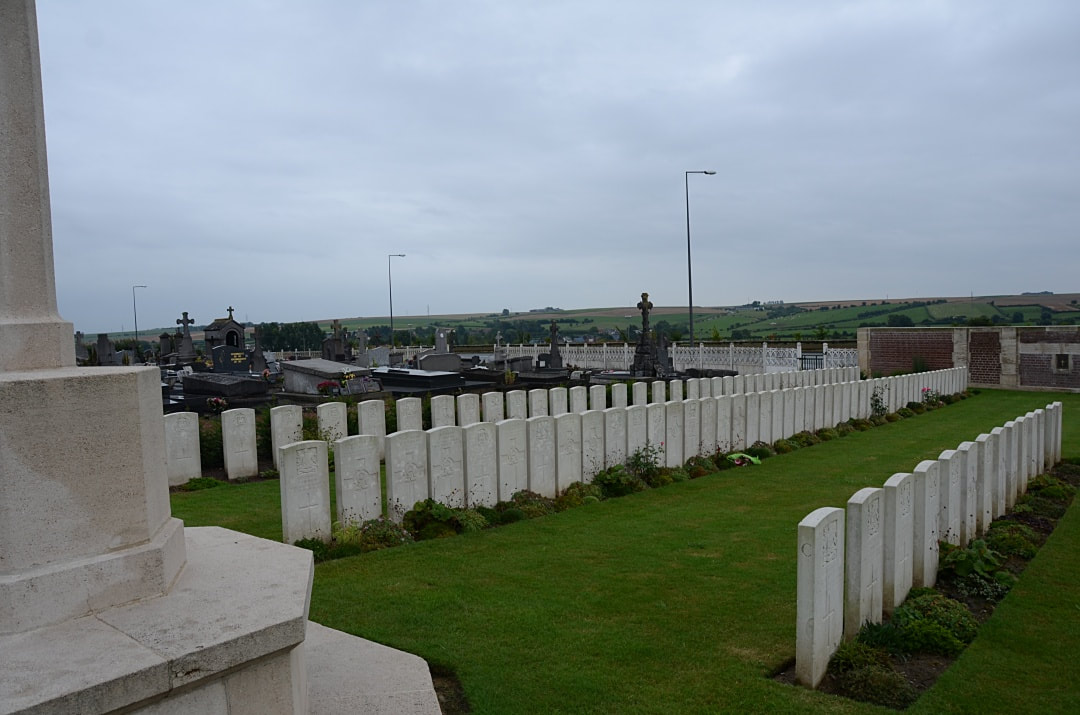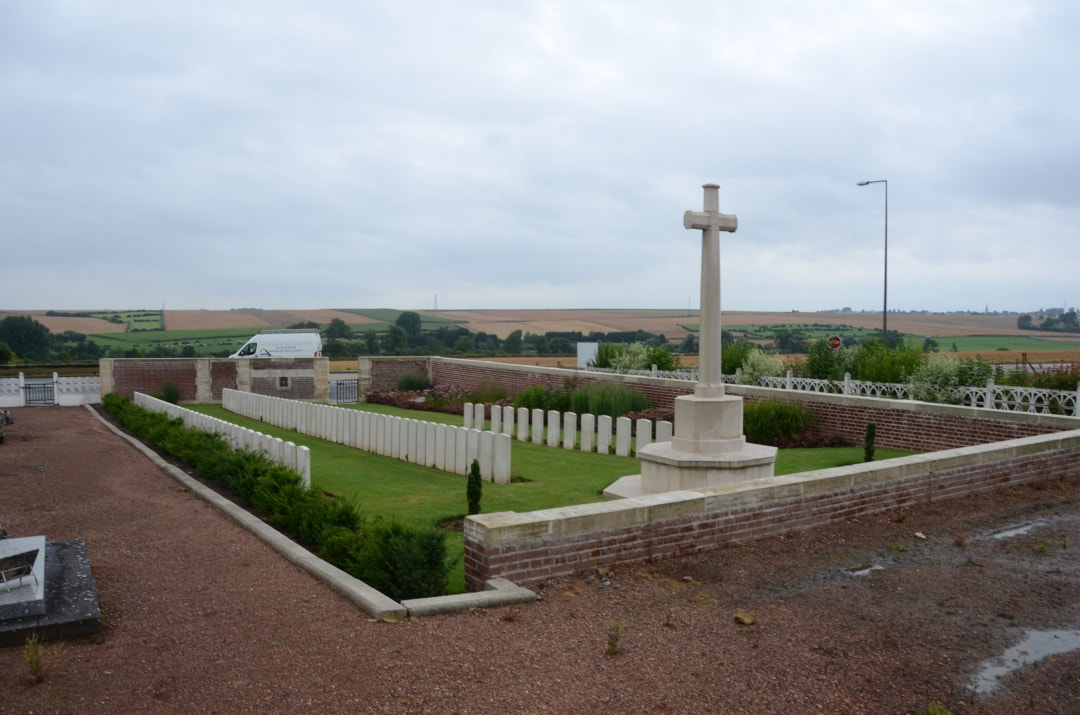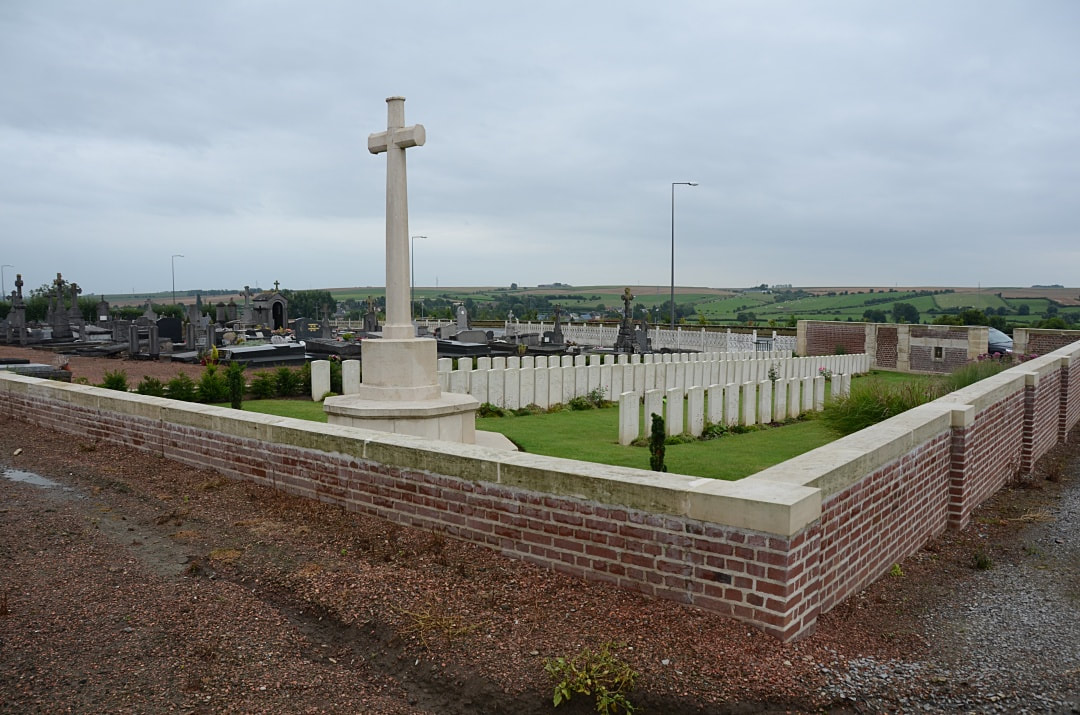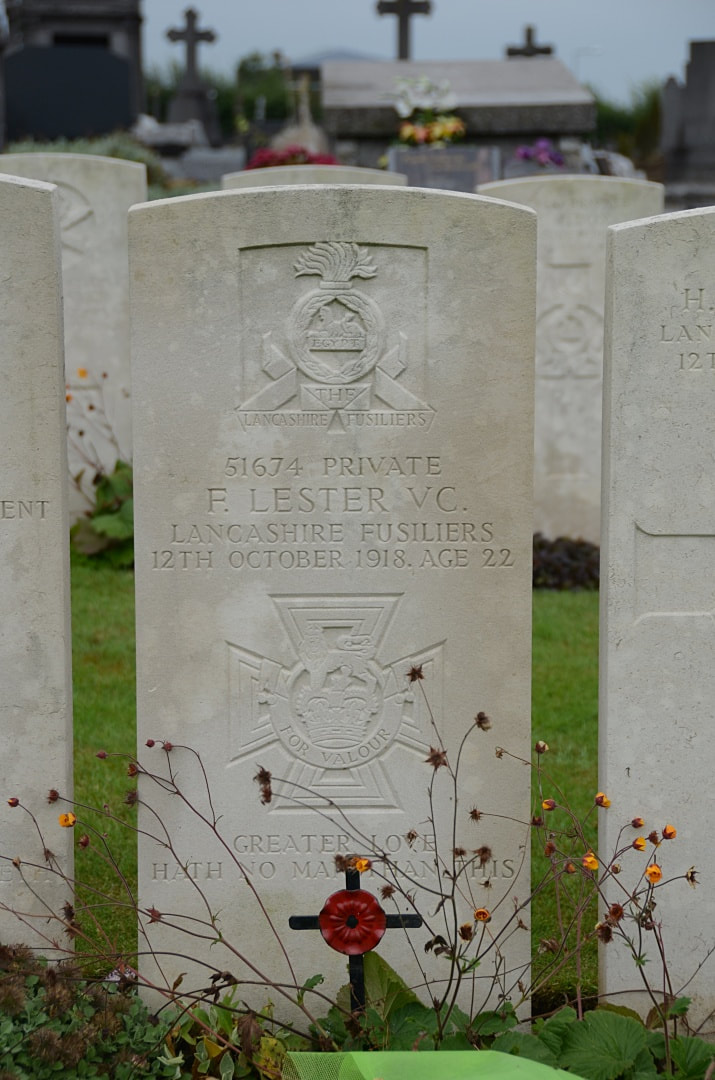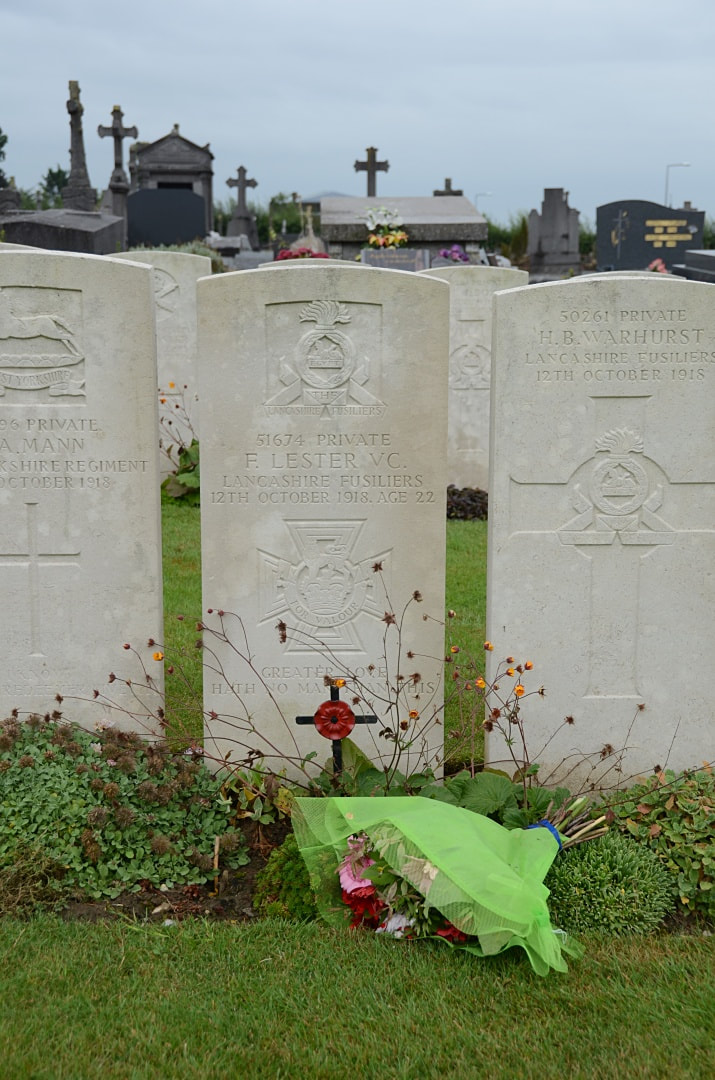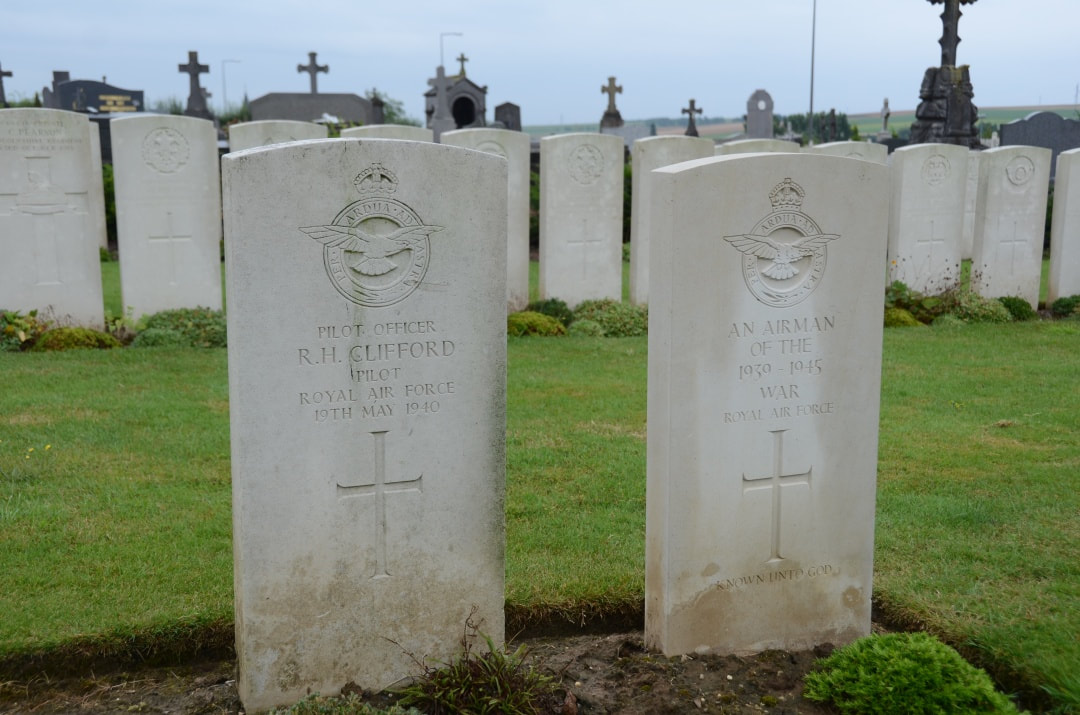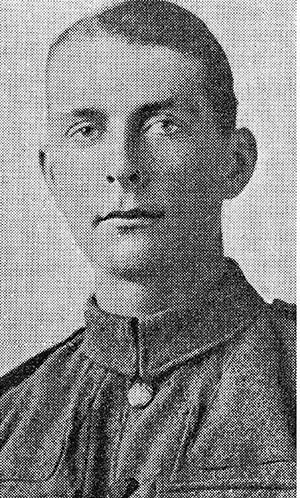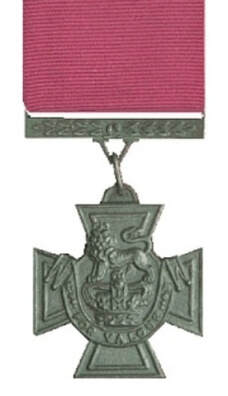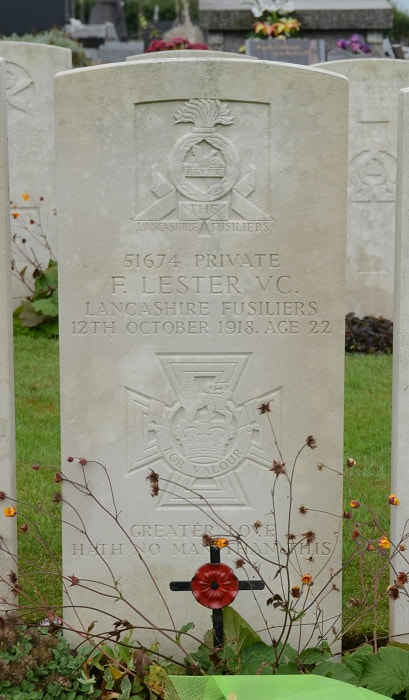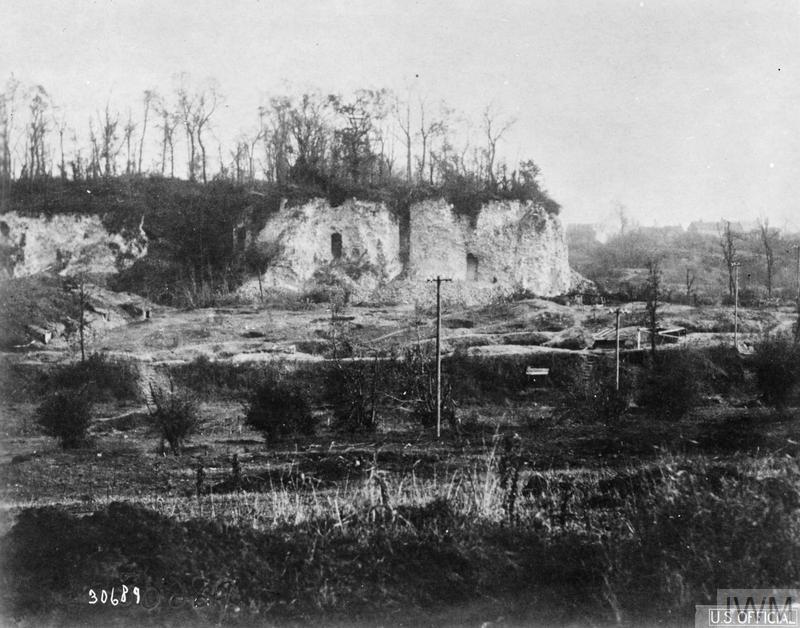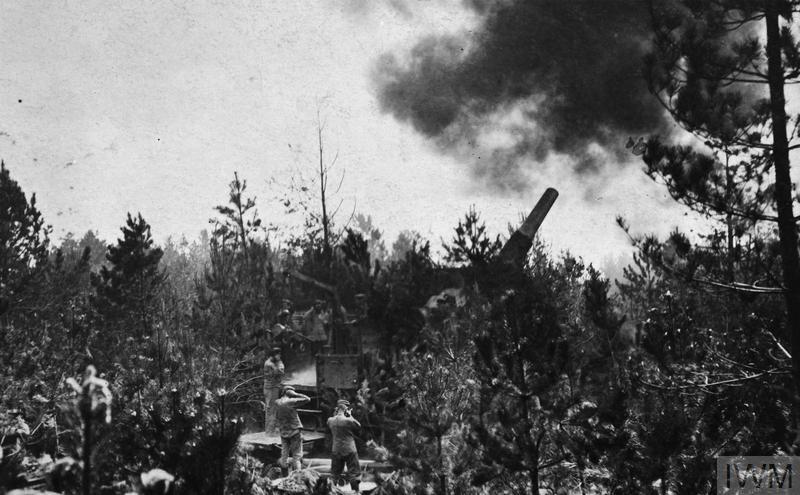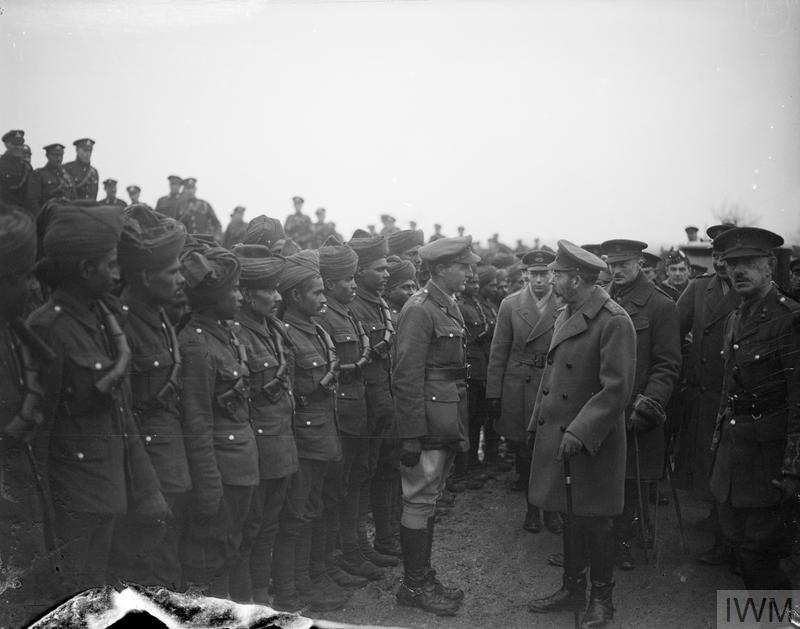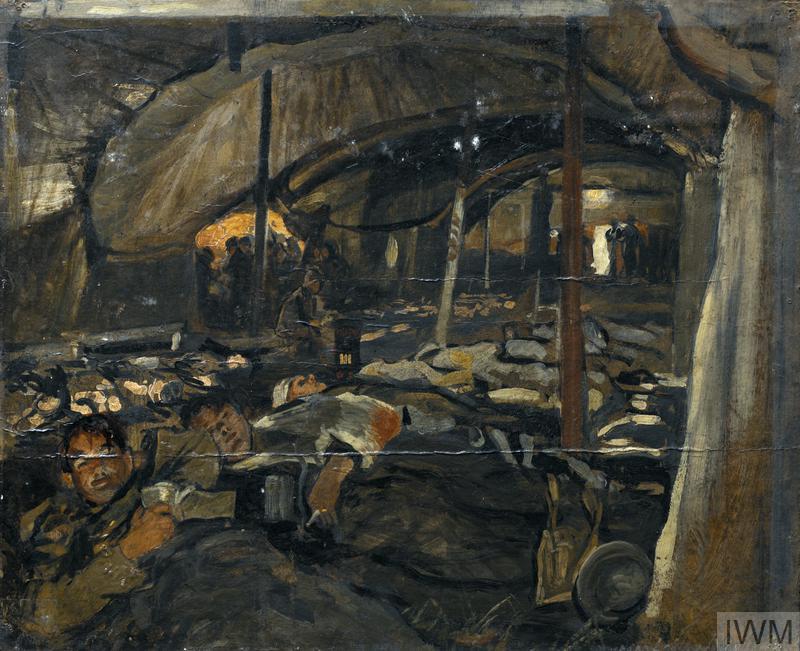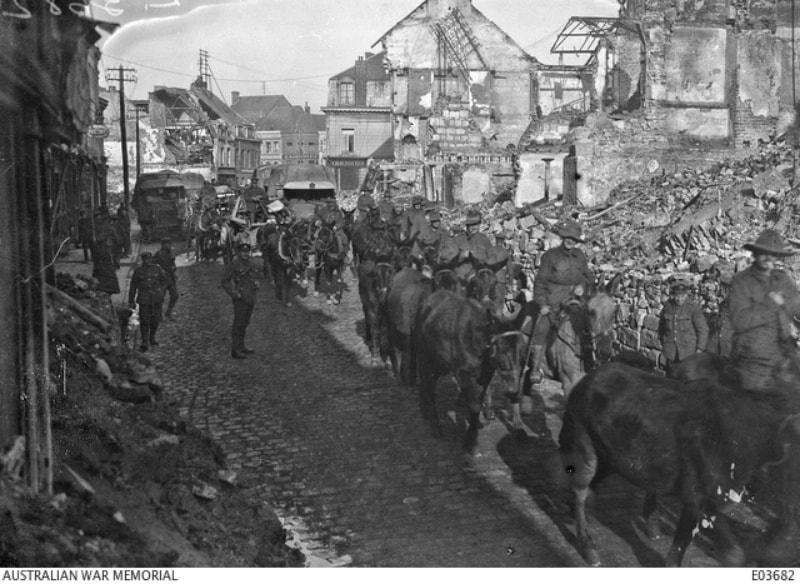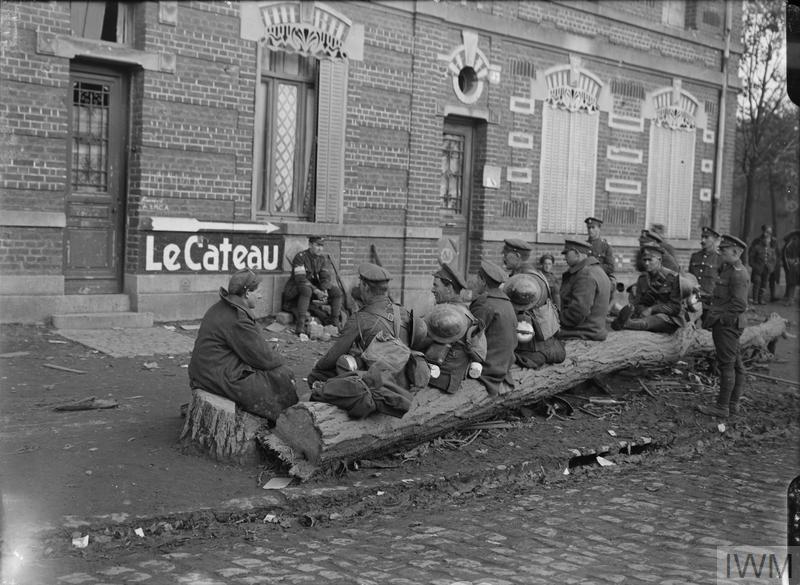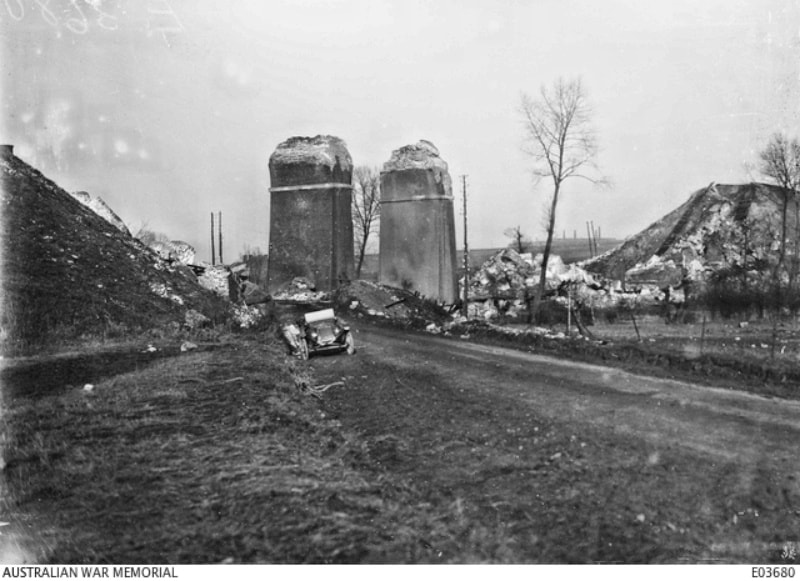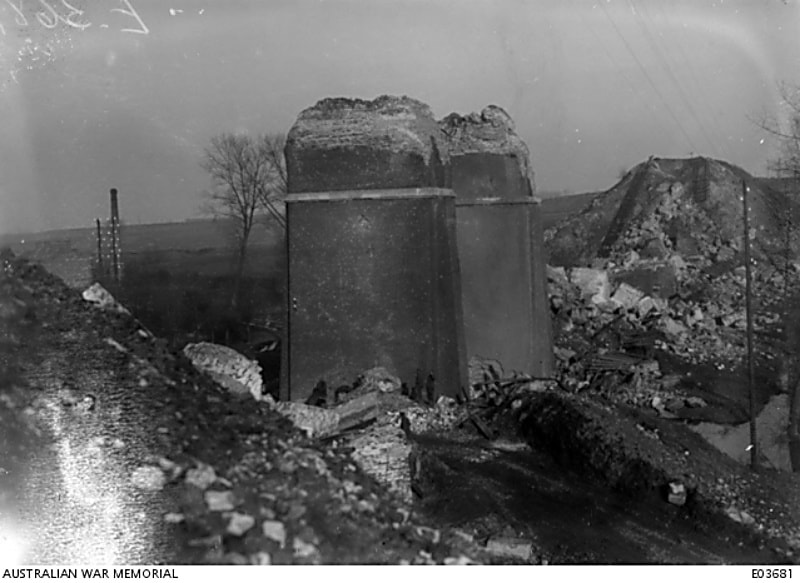NEUVILLY COMMUNAL CEMETERY EXTENSION
Nord
France
GPS Coordinates: Latitude: 50.14679, Longitude: 3.50666
Location Information
Neuvilly is a small village 6 kilometres north-north-west of Le Cateau on the road (D955) to Valenciennes.
The Communal Cemetery and extension are on the north side of the village outskirts and on the north side of the main road (D955).
Visiting Information
Wheelchair access to the cemetery is possible via the main entrance.
Historical Information
Neuvilly was captured by the 17th Division temporarily on 10 October 1918, and taken finally on 17 October. Burials in two of the three cemeteries made after the fighting were later removed to other burial grounds; buried in the third, the extension to the communal cemetery, are casualties from the period 10 October to 2 November 1918, most of them belonging to the 17th Division, and many to the 12th Manchesters.
NEUVILLY COMMUNAL CEMETERY EXTENSION contains 101 Commonwealth burials of the First World War, 6 of them unidentified. There are also two burials of the Second World War.
The extension was designed by W H Cowlishaw.
The adjoining COMMUNAL CEMETERY contains one First World War burial.
Total Burials: 103.
World War One Identified Casualties: United Kingdom 95.
World War One Unidentified Casualties: United Kingdom 6.
World War Two Identified Casualty: United Kingdom 1.
World War Two Unidentified Casualty: United Kingdom 1.
Images in gallery below © Johan Pauwels
51674 Private Frank Lester, V. C.
10th Bn. Lancashire Fusiliers
killed in action 12th October 1918 aged 22,
Row B. 15.
Son of John and Ellen Lester, of Miller's Hay, Irby, Birkenhead. Born at Huyton, Liverpool.
His headstone bears the inscription "Greater Love Hath No Man Than This"
Citation:
An extract from "The London Gazette," No. 31067, dated 13th Dec., 1918, records the following:- " For most conspicuous bravery and self-sacrifice during the clearing of the village of Neuvilly, on 12th October, 1918, when, with a party of about seven men under an officer, he was the first to enter a house from the back door, and shot 2 Germans as they attempted to get out by the front door. A minute later a fall of masonry blocked the door by which the party had entered. The only exit into the street was under fire at point-blank range. The street was also swept by fire of machine guns at close range. Observing that an enemy sniper was causing heavy casualties to a party in a house across the street, Pte. Lester exclaimed, " I'll settle him," and, dashing out into the street, shot the sniper at close quarters, falling mortally wounded at the same instant. This gallant man well knew it was certain death to go into the street, and the party opposite was faced with the alternative of crossing the fire-swept street or staying where it was and being shot one by one. To save their lives he sacrificed his own."
Headstone
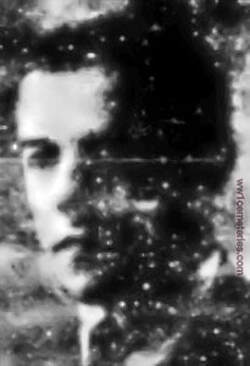
61395 Private
Frederick Bradburn
"D" Coy. 12th Bn. Manchester Regiment
12th October 1918, aged 22.
Row B. 10.
Son of Joseph and Susan Bradburn, of 57, Edgeworth St., Sutton Oak, St. Helens, Lancs.
Frederick Bradburn
"D" Coy. 12th Bn. Manchester Regiment
12th October 1918, aged 22.
Row B. 10.
Son of Joseph and Susan Bradburn, of 57, Edgeworth St., Sutton Oak, St. Helens, Lancs.
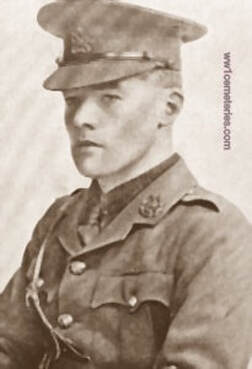
Lieutenant
Frank Hudson
12th Bn. Manchester Regiment
12th October 1918, aged 34.
Row B. 1.
Husband of Evelyn Hudson, 156 Coal Clough Lane, Burnley. Father of a son.
Frank Hudson was a solicitor with Messrs. Roberts, Riley, Creeke and Hudson of St James' Row, Burnley. He attended Burnley Grammar School, followed by Victoria University, Manchester, where he took his degree of Bachelor of Law.
He joined the army in May 1916 and was posted to the Border Regiment before transferring to the Manchester regiment. He had returned to the front after leave on 6th September 1918.
Lieutenant Colonel Danby wrote the following letter to Frank Hudson's wife;
"I am writing to express my deep sympathy and the deep sympathy of all ranks of my battalion with you in your great loss. he was killed whilst most gallantly leading a company to the attack on a very strong position, and I can only say he died the death of a very brave and noble gentleman, such as he had been in his life. His memory is honoured by all who knew him."
Frank Hudson
12th Bn. Manchester Regiment
12th October 1918, aged 34.
Row B. 1.
Husband of Evelyn Hudson, 156 Coal Clough Lane, Burnley. Father of a son.
Frank Hudson was a solicitor with Messrs. Roberts, Riley, Creeke and Hudson of St James' Row, Burnley. He attended Burnley Grammar School, followed by Victoria University, Manchester, where he took his degree of Bachelor of Law.
He joined the army in May 1916 and was posted to the Border Regiment before transferring to the Manchester regiment. He had returned to the front after leave on 6th September 1918.
Lieutenant Colonel Danby wrote the following letter to Frank Hudson's wife;
"I am writing to express my deep sympathy and the deep sympathy of all ranks of my battalion with you in your great loss. he was killed whilst most gallantly leading a company to the attack on a very strong position, and I can only say he died the death of a very brave and noble gentleman, such as he had been in his life. His memory is honoured by all who knew him."
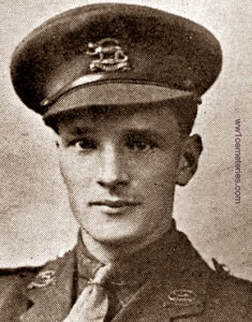
Captain
Malcolm Colquhoun MacLaren, M.C.
7th Bn. Leicestershire Regiment
23rd October 1918, aged 27.
Row B. 37.
Son of John MacLaren, of Westcroft, Aberfeldy, Perthshire.
Captain Malcolm Colquhoun MaClaren (known as Mol in the family) was born on 20 September 1891, in Edinburgh, Midlothian, Scotland, He joined the National Bank Of India in 1911. At the outbreak of World War 1 in August 1914 he enlisted as a private in 10th Battalion Royal Fusilers. In 1915 he was sent to France as Lance Corporal and soon after promoted to a Sergeant. He received his commission in the Leicester Regiment in the autumn of 1916. He was wonded in action on 17 May 1917 when he was hit by shrapnel. He distinquished himself in battle under fire. On the night of 7-8 October 1918 Capt Maclaren won the Military Cross for conspicuous gallantry and devotion to duty during the attack on the Masnieres-Beaurevoir line west of Walincourt. When the battalion was approaching the assembly position, and had to file through one gap in the wire under fire from three enemy machine guns, Capt Maclaren did fine work in directing the companies to their positions. His coolness at a critical moment contributed to the ultimate success of the operations. He was killed in action only 3 weeks later on 22 October 1918, at the age of 27, and was buried in Neuvilly, Nord, France.
Additional text provided by David Welch
Malcolm Colquhoun MacLaren, M.C.
7th Bn. Leicestershire Regiment
23rd October 1918, aged 27.
Row B. 37.
Son of John MacLaren, of Westcroft, Aberfeldy, Perthshire.
Captain Malcolm Colquhoun MaClaren (known as Mol in the family) was born on 20 September 1891, in Edinburgh, Midlothian, Scotland, He joined the National Bank Of India in 1911. At the outbreak of World War 1 in August 1914 he enlisted as a private in 10th Battalion Royal Fusilers. In 1915 he was sent to France as Lance Corporal and soon after promoted to a Sergeant. He received his commission in the Leicester Regiment in the autumn of 1916. He was wonded in action on 17 May 1917 when he was hit by shrapnel. He distinquished himself in battle under fire. On the night of 7-8 October 1918 Capt Maclaren won the Military Cross for conspicuous gallantry and devotion to duty during the attack on the Masnieres-Beaurevoir line west of Walincourt. When the battalion was approaching the assembly position, and had to file through one gap in the wire under fire from three enemy machine guns, Capt Maclaren did fine work in directing the companies to their positions. His coolness at a critical moment contributed to the ultimate success of the operations. He was killed in action only 3 weeks later on 22 October 1918, at the age of 27, and was buried in Neuvilly, Nord, France.
Additional text provided by David Welch

